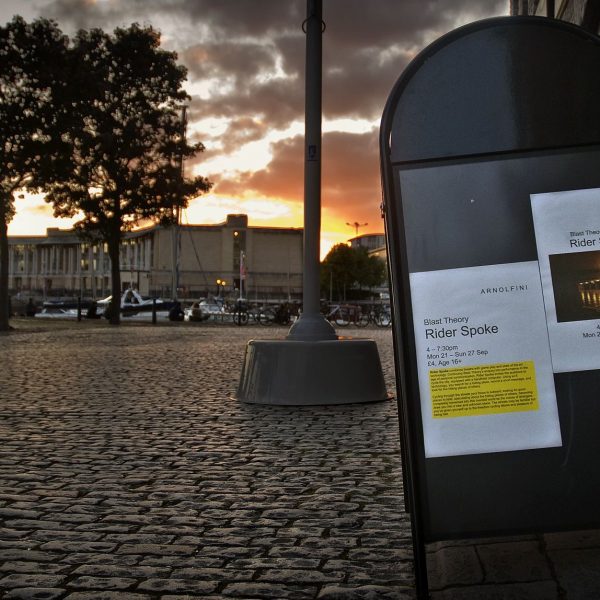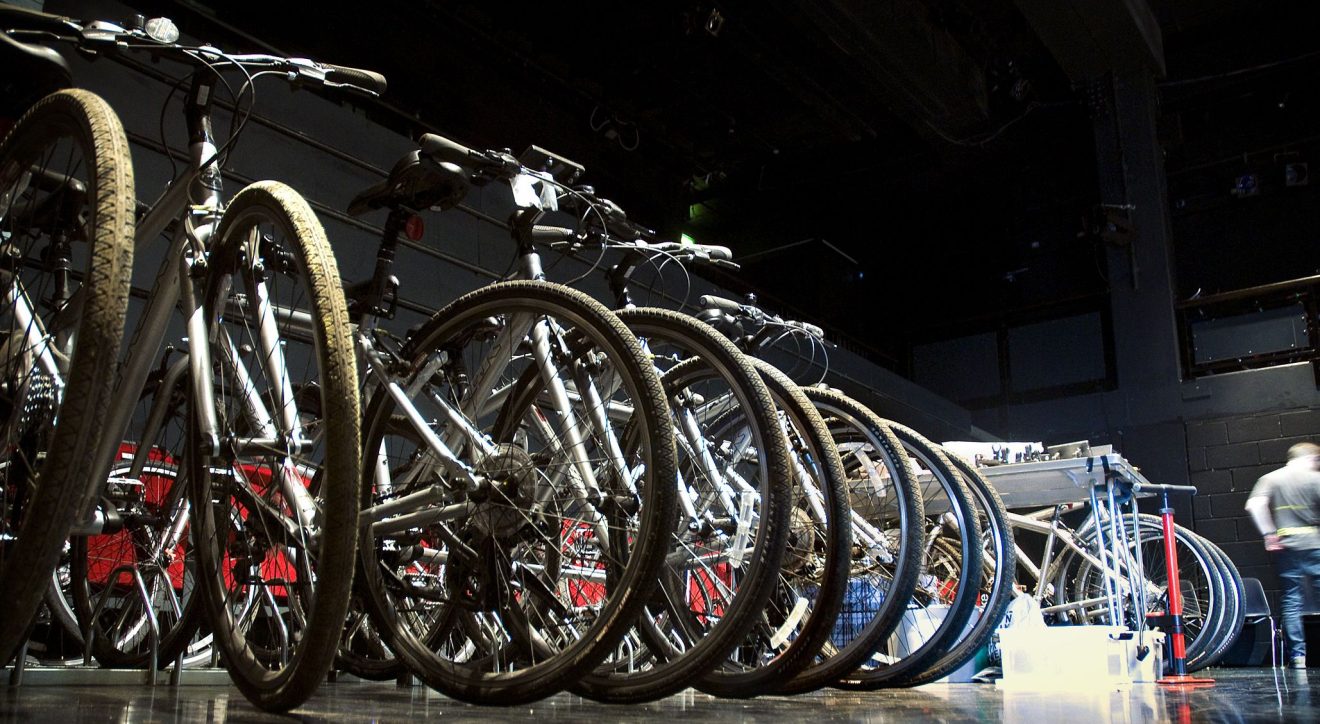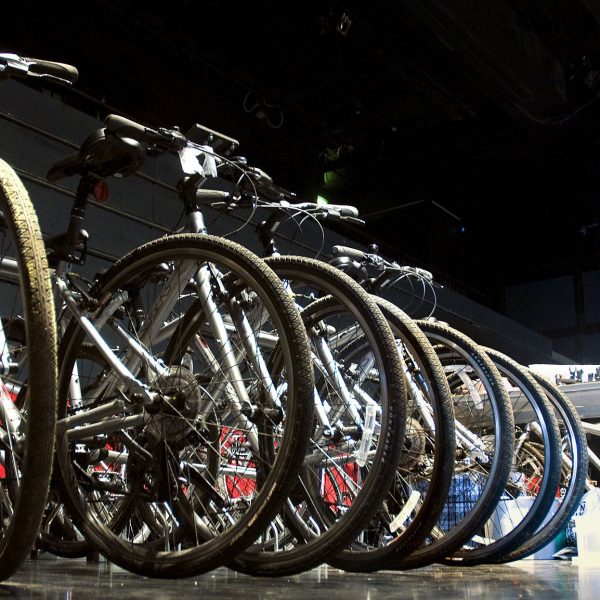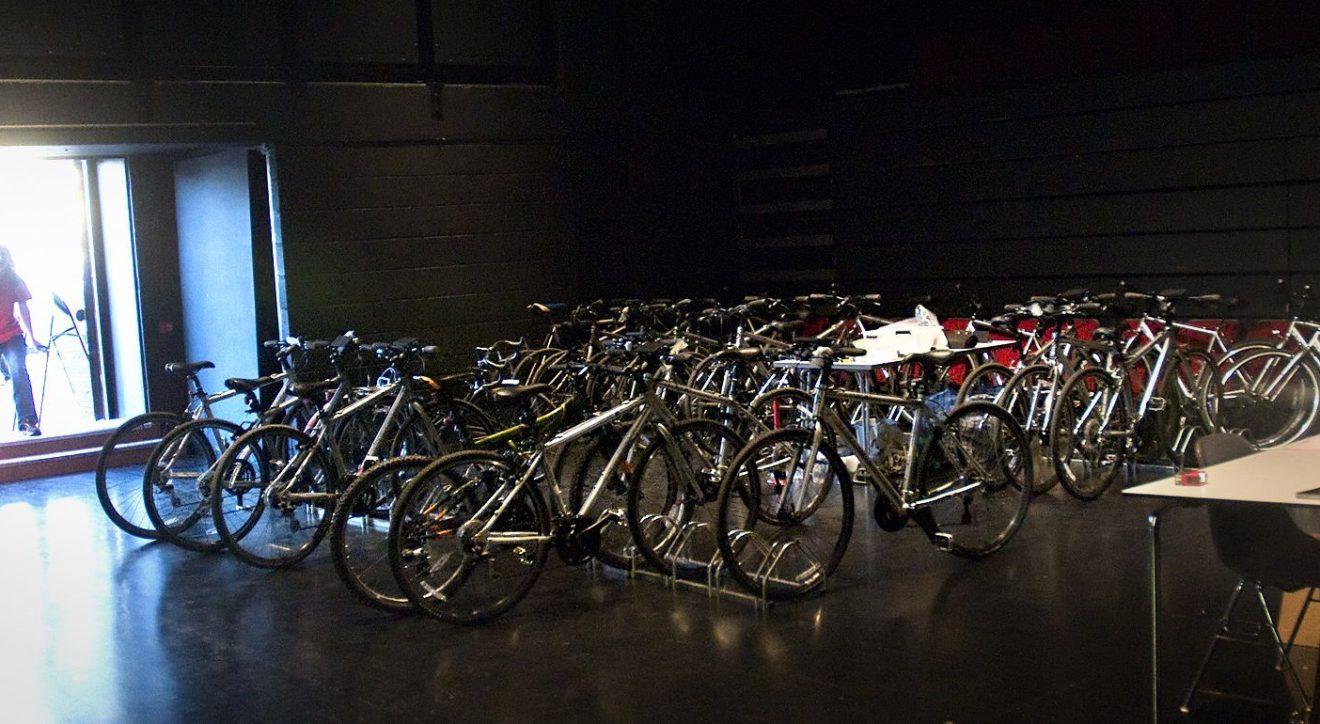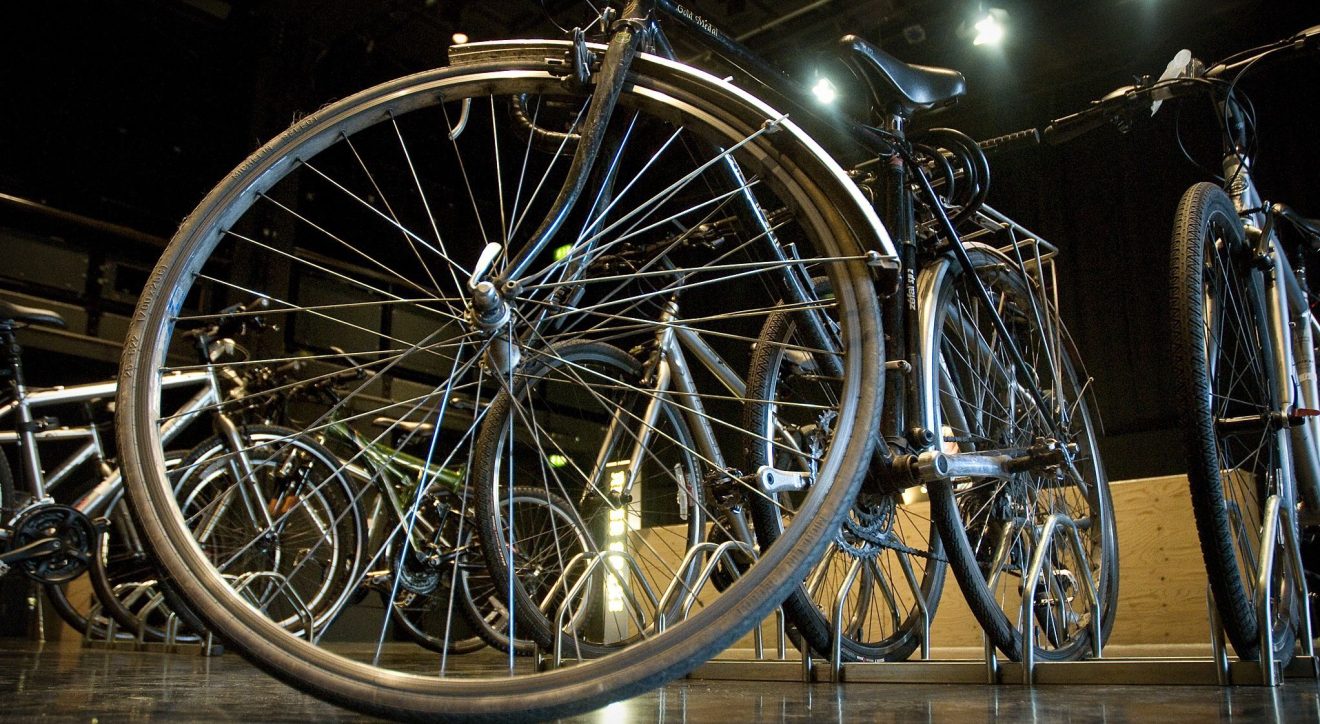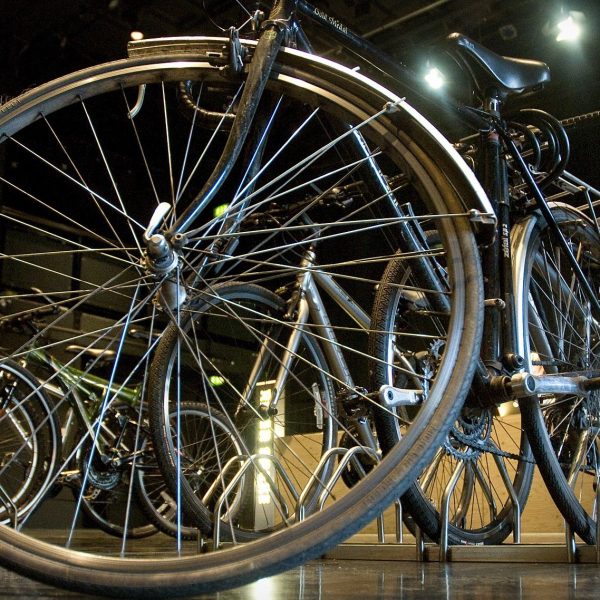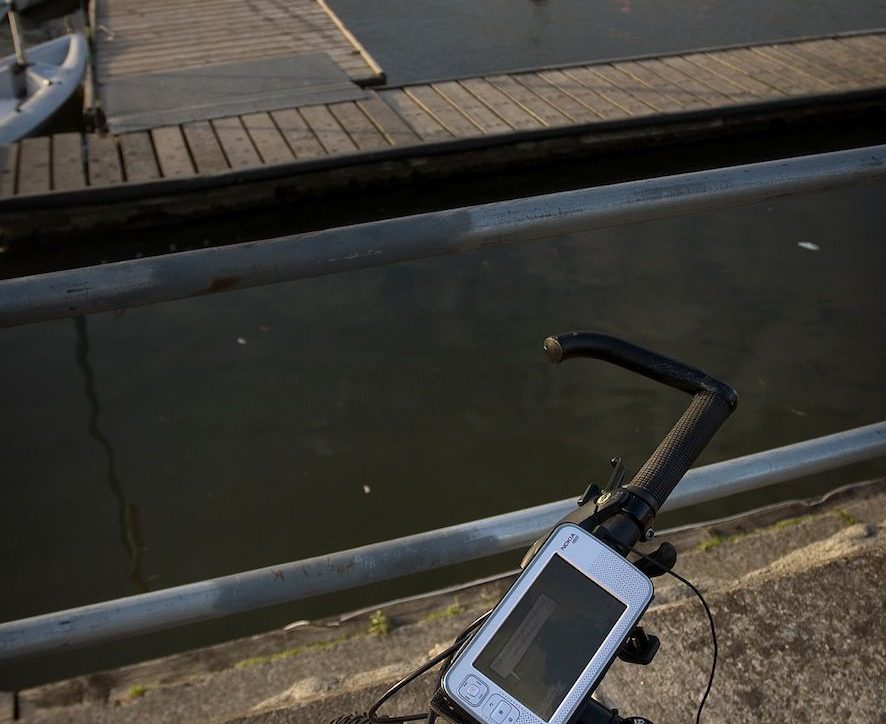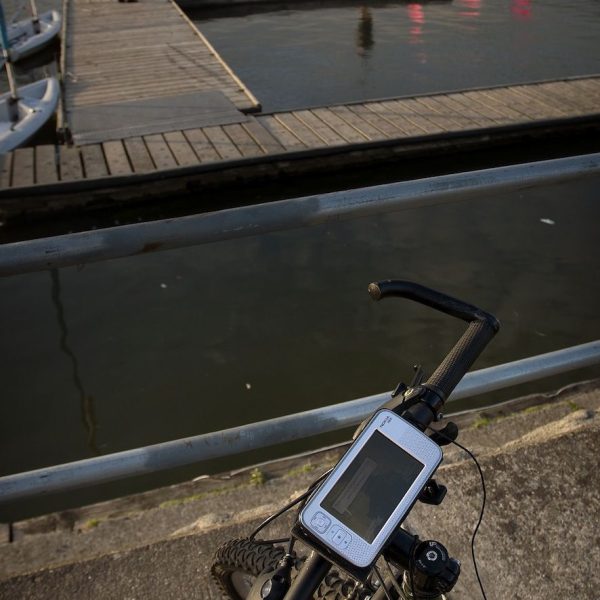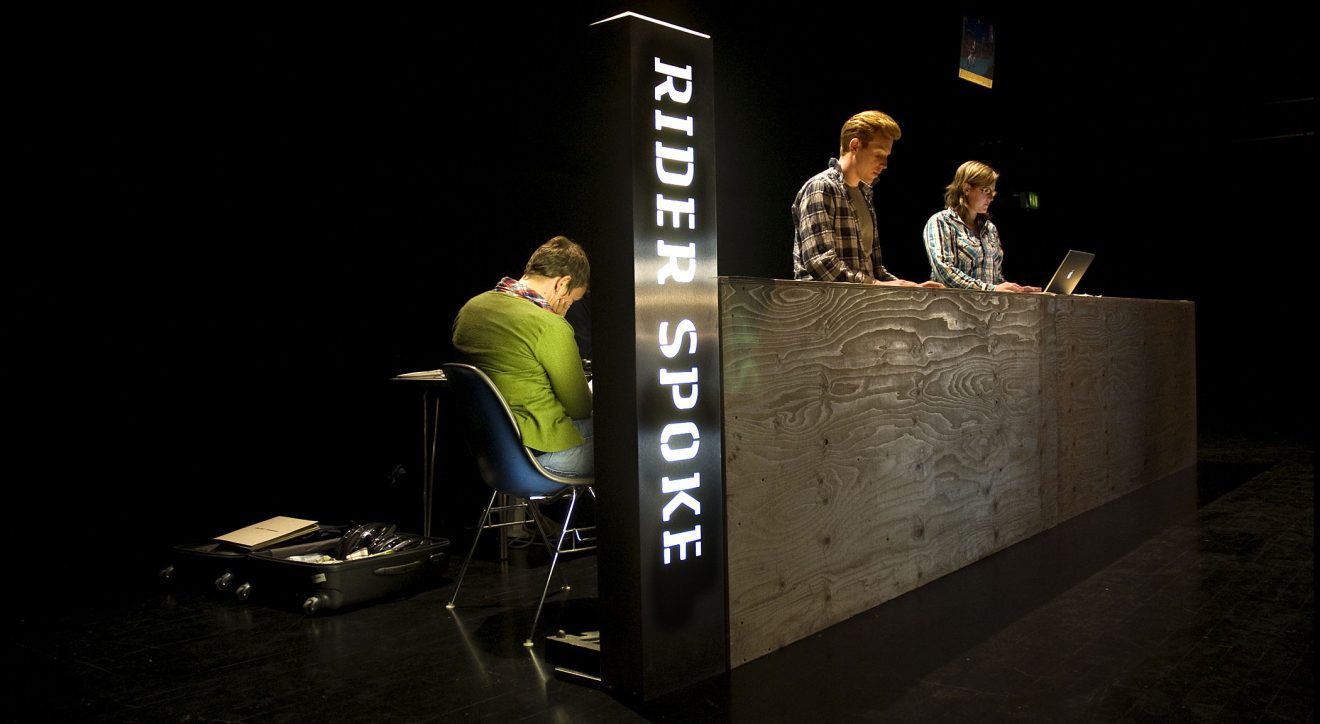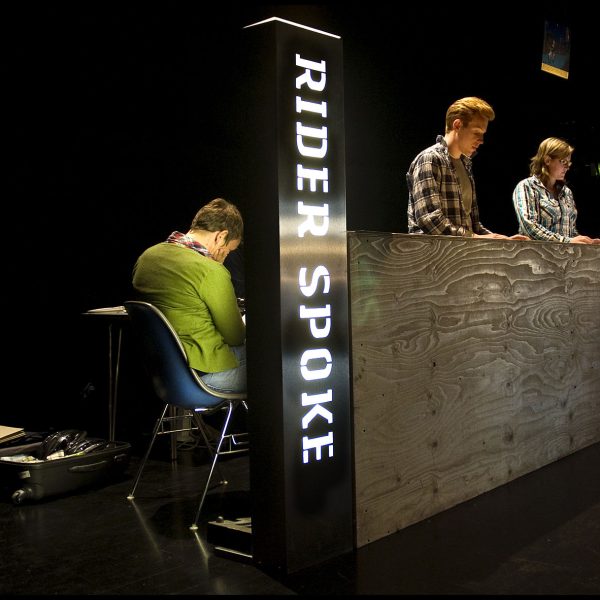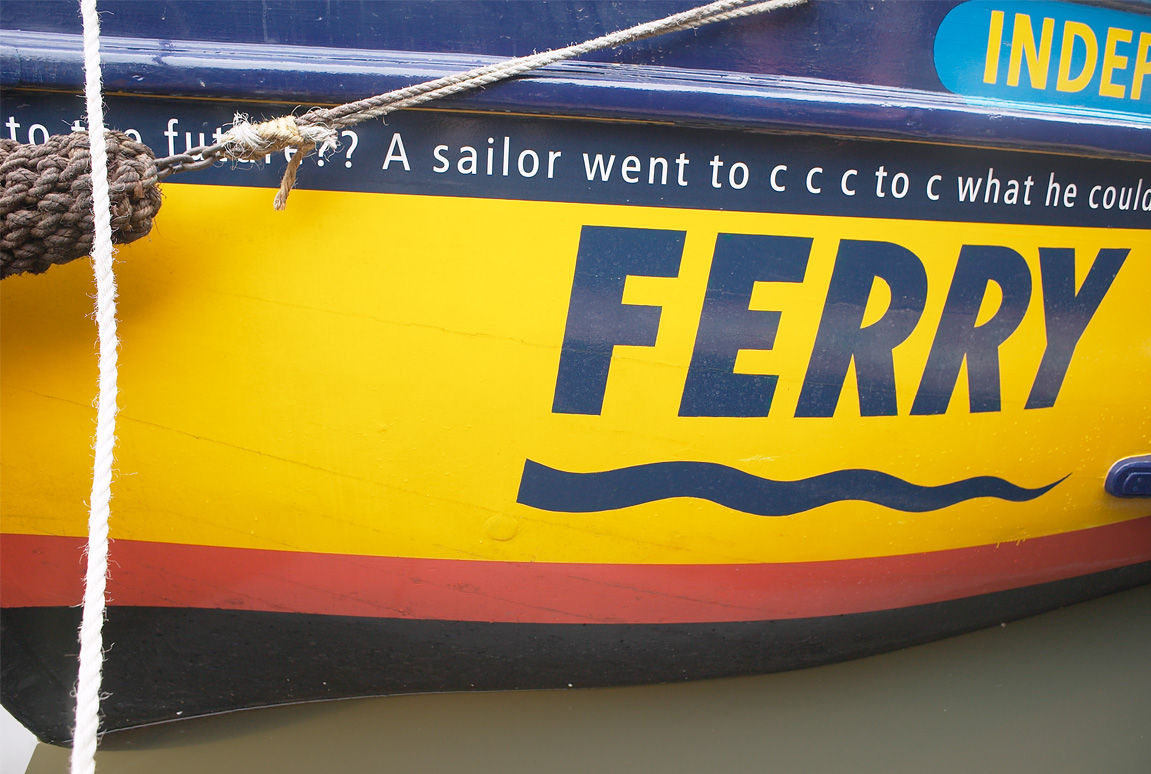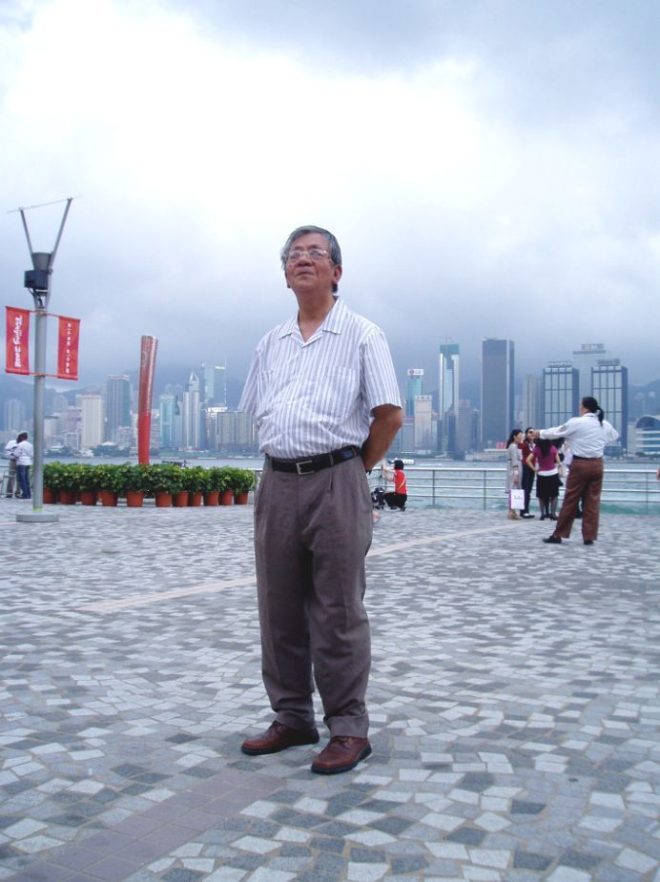
Synopsis
Rider Spoke is a work for cyclists combining theatre with game play and state of the art technology. The project continues Blast Theory’s enquiry into performance in the age of personal communication. Developing from works such as Uncle Roy All Around You (2003) the piece invites the audience to cycle through the streets of the city, equipped with a handheld computer. They search for a hiding place and record a short message there. And then they search for the hiding places of others.
Description
The piece continues Blast Theory’s fascination with how games and new communication technologies are creating new hybrid social spaces in which the private and the public are intertwined. It poses further questions about where theatre may be sited and what form it may take. It invites the public to be co-authors of the piece and a visible manifestation of it as they cycle through the city. It is precisely dependent on its local context and invites the audience to explore that context for its emotional and intellectual resonances.
In keeping with much of the group’s work Rider Spoke has a high threshold for the audience: you must be willing to cycle, alone at night, through the city. And this sets the stage for a very personal and intimate form of participation. Instead of “User Generated Content”, the artists’ have approached the project as inviting “Publicly Created Contributions”.
Description of the work
The audience can take part either either on their own bike or borrow one supplied by Blast Theory. Following a short introduction and a safety briefing you head out into the streets with a handheld computer mounted on the handlebars. You are given a question and invited to look for an appropriate hiding place where you will record your answer. The screen of the device acts primarily as a positioning system, showing where you are and whether there are any hiding places nearby. The interface employs imagery drawn from Mexican votive painting, sailor tattoos and heraldry: swallows flutter across the screen to show available hiding places, prefab houses indicate places where others have hidden.
Once you find a hiding place (a spot previously undiscovered by any other player) the device flashes an alert and the question. The question is one of a selection authored by Blast Theory that asks you – alone, in an out of the way spot – to reflect on your life. You then record your answer onto the device. Each hiding place combines two properties: the physical location and the electronic location as reported by the device and, for this reason, position itself is slippery and changeable. This is especially true as the University of Nottingham has designed and built a system that uses WiFi access points to determine the position of each rider.
The other aspect of the game is to find the hiding places of others. When you find one, the device alerts you to stop and then shows you the question that that person answered and plays you their answer. The recordings that people make are only available in this context: played to a player, alone, in the place where they were recorded.
As you roll through the streets your focus is outward, looking for good places to hide, speculating about the hiding places of others, becoming completely immersed into this overlaid world as the voices of strangers draw you into a new and unknown place.
The streets may be familiar but you’ve given yourself up to the pleasure of being lost.
Blast Theory
Blast Theory is renowned internationally as one of the most adventurous artists’ groups using interactive media, creating groundbreaking new forms of performance and interactive art that mixes audiences across the internet, live performance and digital broadcasting. Led by Matt Adams, Ju Row Farr and Nick Tandavanitj, the group’s work explores interactivity and the social and political aspects of technology. It confronts a media saturated world in which popular culture rules, using performance, installation, video, mobile and online technologies to ask questions about the ideologies present in the information that envelops us.
Rider Spoke is part of The Bristol Do 2009 www.bristoldo.com - An outdoor arts festival that took place in Portland Square, St Pauls on the 26 & 27 Sept 2009.
Rider Spoke from Blast Theory on Vimeo.

